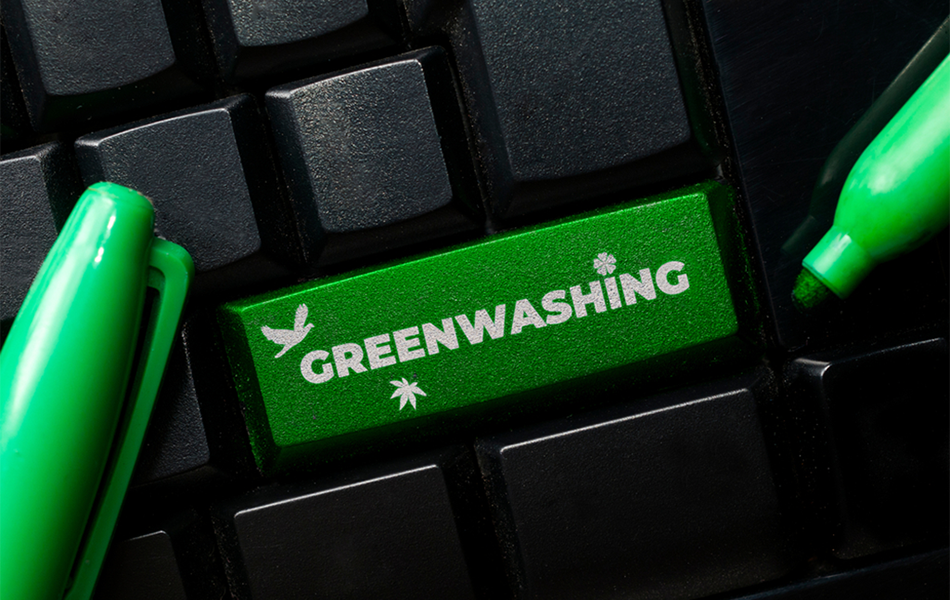December 17, 2021

Greenwash [ˈɡriːnwɒʃ] NOUN: disinformation disseminated by an organisation so as to present an environmentally responsible public image.
Greenwash is taking over from Corporate Social Responsibility as companies compete in the Olympics of ‘Virtue Signalling’. CSR took a beating when we found out that companies like VW, which had one of the world’s largest Corporate Social Responsibility

programmes, was simultaneously poisoning us all with excess diesel particulates and 40 times the legal limits for nitrogen oxide. Behind the veneer of CSR respectability, they were cheating on emissions regulations. Deadly deceptive behaviour behind the corporate posturing.
So now we’re drowning in a media sea of eco-friendly virtue-signalling or greenwashing. Reframing everything to appear kind to polar bears, whiter than white (except when black lives matter), and with the carbon footprint of an ant.
 Consumers want to believe they are doing the right thing. But what is Natural? What is Organic? Bio-degradable? Sustainable? Recyclable? These terms have been so abused by marketing teams that people are understandably sceptical.
Consumers want to believe they are doing the right thing. But what is Natural? What is Organic? Bio-degradable? Sustainable? Recyclable? These terms have been so abused by marketing teams that people are understandably sceptical.
In our field, most shampoos and conditioners have water (Aqua) as the main element, 80-90%. It’s the most effective carrier of the key ingredients. Products that say they are 90% organic or natural are not necessarily that healthy as the majority of the active ingredients may be synthetic and harsh on the hair and scalp.
Marketing terminology can easily mislead. One popular product from a multinational craftily stated 100% Certified Organic ingredients on the front of pack. On closer inspection of the back of pack small print, there were just two ingredients out of 26 that were indeed 100% organic and these made up just 1% of the formula. In the other 99% were some truly nasty synthetics including four different cheap silicones.
So do we join the bandwagon? I’d rather not. Beyond the virtue signalling, the direction of travel in concrete change is the most important, and no one will magic up a solution overnight.
We’re keen to reduce any negative footprints, and are consciously examining our whole supply chain. We’ve a long way to go, but we’re making significant steps on that journey.
A rising portion of our energy use is from renewables and we are aiming for 100%. We’re reducing some steps in our supply chains and eliminating waste from that. We’re steadily replacing plastic in our packaging.
Aluminium is endlessly recyclable and 70% of all the aluminium ever mined is still in use. Glass too is easily recycled and these are our favoured choices to switch into. A few years ago, we eliminated secondary packaging cartons on all our shampoos, conditioners and treatments. New brush box cartons now have clear cellulose film from wood pulp replacing old plastic sheet windows. We also stopped buying drinks and waters in plastic.
Last year we moved one of our products from plastic into glass and aluminium. This year three more. We hope this transition of the full range will be complete in the next 2-3 years. From the summer we will offer refills without pumps so that you reuse the pump you have. These refills will come with an aluminium cap and be £1 cheaper.
 Sian Sutherland, from A Plastic Planet, has spearheaded many global plastic-free initiatives including the Plastic Free Aisle that launched in 2018 in Amsterdam, becoming a catalyst for change in supermarkets. As a solutions-focused, pro-business organisation, A Plastic Planet strives to help industry ‘turn off the plastic tap’. Having Sian on our advisory board is helping us keep the pressure on ourselves to accelerate our own pace of change.
Sian Sutherland, from A Plastic Planet, has spearheaded many global plastic-free initiatives including the Plastic Free Aisle that launched in 2018 in Amsterdam, becoming a catalyst for change in supermarkets. As a solutions-focused, pro-business organisation, A Plastic Planet strives to help industry ‘turn off the plastic tap’. Having Sian on our advisory board is helping us keep the pressure on ourselves to accelerate our own pace of change.
Recycling (often wish-cycling), sustainability and circularity are buzzwords for this century.
Less than 10% of plastic is recycled, and it's downgraded each time. The public is waking up to the sad fact that there are no recycling fairies. The UK exports over 60% of our plastic waste – often to developing countries with inadequate facilities to deal with it. The myth that we can simply recycle our way out of the plastic crisis provides cover for more and more plastic to be produced. Plastic production is set to triple by 2040. It is in our air, our water, our food and of course in our oceans. The reality is that plastic will never fit into a circular system. Recycling isn’t the answer. We simply need to use less of it.
 At our warehouse, we’ve used the last of plastic packing tape and returned to gummed paper. The old plastic ties are now good old-fashioned string.
At our warehouse, we’ve used the last of plastic packing tape and returned to gummed paper. The old plastic ties are now good old-fashioned string.
A Word on Bio-Plastics
Bio-plastic - sounds like a great solution, doesn't it? Giving us all the benefits of fossil fuel plastic but none of the downsides? Unfortunately not. This is no silver bullet in the solution to our plastic crisis. Bio-plastics come in two buckets.
Bucket 1 is a material made from bio-polymers often derived from sugarcane.

Although they come from a more sustainable source, once made into a polymer the ethylene is bio-identical to the fossil fuel version. This means it has the same indestructible qualities; breaking down into micro-plastics and polluting our planet for centuries. ‘Sustainable’ in this case just means sidestepping a few million years and creating an endless source of the stuff we’re trying to get rid of.
Bucket 2 is different. These plastic-like materials are also plant derived but are properly certified as 'compostable'. Many food companies are starting to use compostable bio-plastics for their packaging, like ready meal trays. This makes good sense as the packaging is often contaminated with food so it acts as a bio-conduit to take food waste into our composting systems, much needed by our hungry soils. But these compostable bio-plastics cannot be used for everything. The simple rule of thumb is this - does it help take food waste back to soil? Using compostable bio-plastics for hair products and beauty cosmetics may sound like a good idea, but you wouldn’t put shampoo or face cleanser on your soil.
So, this is why we are not switching our current plastic bottles to any version of the bio-plastics available. Instead, we’re moving to metal, paper and glass - all materials that are infinitely recycled with a value driven recycling system already in place. Aluminium for example is so valuable to recyclers that over 70% of all aluminium ever mined is still in use today. Versus 0.00001% of plastic. It's a slower process to switch everything over. But we think it's the right track to choose.
We are waiting for the technology that will make the linings of containers waterproof and plastic free. This is the holy grail which will facilitate a quantum leap in plastic reduction. We may very soon be there. We are exploring a new lining material made from over 10 plant extracts which uses nature’s own waterproofing methods to create a bio-sourced compound kept in its natural form.
 This is then easily degradable, without even needing a composting infrastructure. It can line a bottle made from paper pulp to make it waterproof. Everything can then go into the paper recycling waste stream. This is what the food and cosmetics industries are waiting for. Let’s hope it comes very soon.
This is then easily degradable, without even needing a composting infrastructure. It can line a bottle made from paper pulp to make it waterproof. Everything can then go into the paper recycling waste stream. This is what the food and cosmetics industries are waiting for. Let’s hope it comes very soon.
Plastic is a miracle material that we have simply misused. It was never intended for short term, single use. Saying something is ‘recyclable’ is no longer sufficient when we know that so little will actually be recycled – perhaps once, rarely twice. Every piece of plastic ever made still exists on our planet today, unless it was burned – and we know where burning fossil fuels has got us. We need to respect this indestructible material and take responsibility for it. There really is no time to waste…

Michael Van Clarke
March 24, 2023
March 20, 2023
March 20, 2023
How many Bobs have you got?
These quick clunky haircuts are becoming prolific as hairdressers become less and less able to layer hair properly. Emily had the very common 3-step Bob. The baseline, a step four inches off the bottom, and a sort of torn irregular piece suggestive of a long

Exclusive Offers Every Month
Sign up to our newsletter to receive 15% off your first order.